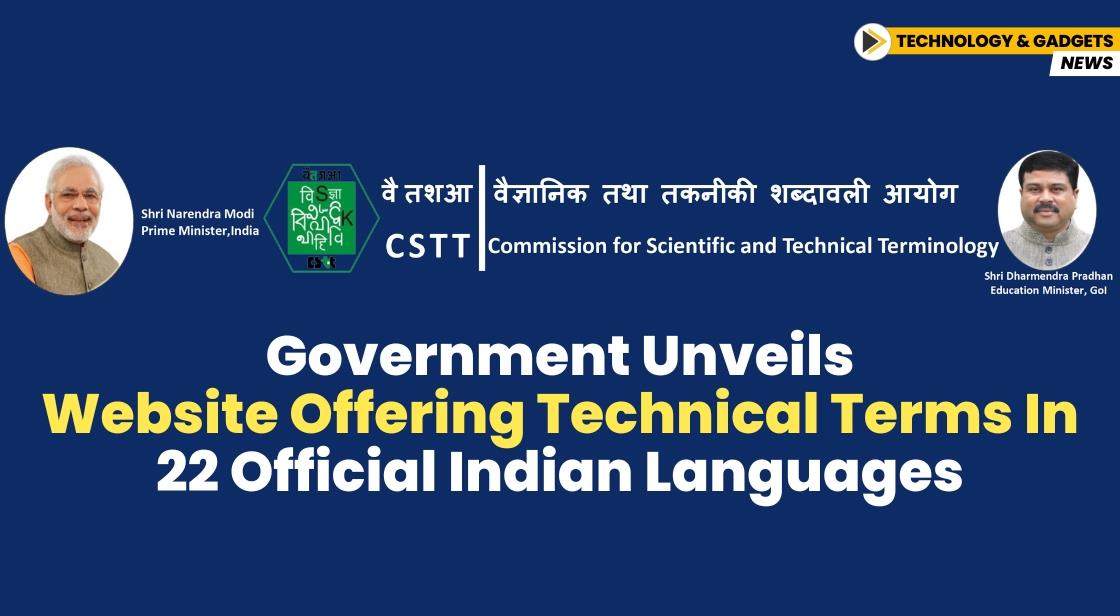Government Unveils Website Offering Technical Terms in 22 Official Indian Languages

News Synopsis
The Commission for Scientific and Technical Terminology (CSTT), under the Union Education Ministry, has recently launched a significant web portal that offers technical terms in all 22 official Indian languages. This initiative aims to enhance accessibility to scientific and technical terminology across a wide spectrum of languages, ensuring that education, particularly in technical fields, can reach a broader audience.
The website, shabd.education.gov.in, is designed to serve as a centralized repository of glossaries and dictionaries that compile these essential terms. In addition to the glossaries created by CSTT, other institutions and agencies are also able to host their collections on this digital platform, making it a vast and inclusive resource for all users.
Large Repository of Terms and Dictionaries
As of now, the website boasts an impressive collection of around 322 glossaries comprising over 2.2 million words. These glossaries are available for public use and can be searched easily through the platform. The government aims to increase the number of glossaries available on the portal, with a target of 450 glossaries and a total of three million words. This expansion will ensure a wider range of subjects and technical terms are covered, providing an invaluable resource for students, professionals, and researchers.
Users visiting the platform can search for the equivalents of scientific and technical terms in various Indian languages. They can also provide feedback on the terms that have already been developed by the CSTT, allowing for continuous improvement and refinement of the glossary database.
Advanced Search Capabilities for Users
The shabd.education.gov.in portal offers robust search functionalities, enabling users to search for terms based on specific languages, subjects, or even the type of dictionary they wish to consult. This flexibility allows users to either search within a specific glossary or across the entire collection of glossaries on the platform. The platform is user-friendly, designed to cater to a broad audience, including researchers, educators, and students from diverse linguistic backgrounds.
This initiative is especially crucial in the context of promoting technical education in Indian languages, including subjects like engineering and medicine. By making these terminologies available in Indian languages, the government seeks to make technical education more inclusive and accessible, bridging language barriers for millions of students across India.
The Role of the Commission for Scientific and Technical Terminology (CSTT)
The Commission for Scientific and Technical Terminology (CSTT) was established in 1961 with the primary goal of evolving and standardizing scientific and technical terms in Hindi and other Indian languages. Over the years, the commission has made significant contributions to the field by publishing numerous textbooks, monographs, and quarterly journals. These publications, such as 'Vigyan Garima Sindhu' and 'Gyan Garima Sindhu', have played an essential role in disseminating technical knowledge in Indian languages.
In addition to its publications, the CSTT also prepares administrative glossaries and departmental terminology that are widely used by various government departments, research institutions, public sector units, and other autonomous organizations. The commission actively organizes workshops, seminars, training programs, and conferences to promote the standardization and usage of scientific and technical terms in Hindi and other Indian languages.
International and Domestic Response to the Portal
Since the website's launch in March 2024, it has attracted significant attention, both domestically and internationally. According to official data, the platform has recorded over 122,643 hits from users across India and abroad. This high engagement rate reflects the growing interest in the availability of technical terms in multiple Indian languages, as well as the platform’s utility for users from various sectors.
The portal is expected to be a vital resource for educators, students, researchers, and professionals across a range of disciplines, providing them with access to standardized and verified technical terms in their preferred language.
How the Terminologies Are Developed
The process of collating and standardizing these technical terms involves a collaborative effort between several committees and organizations. According to Professor Girish Nath Jha, chairman of the CSTT, the development of these glossaries is handled by subject-specific committees that focus on gathering and verifying the technical terms relevant to their areas of expertise.
At the same time, language-specific committees work on collating and standardizing these terms in various Indian languages, ensuring that the technical terminology is consistent and accurate across all linguistic versions. The CSTT is also supported by the National Translation Mission (NTM) under the Department of Higher Education, which plays a crucial role in translating technical content and terminology.
The commission draws on a variety of sources for these terms, including definitional dictionaries, glossaries, and reference materials that have been published over the years. These sources are meticulously reviewed to ensure that the terms included in the online platform are accurate, up-to-date, and relevant to the respective fields.
Significance of the Portal for Indian Education
The launch of this website is particularly timely as India works to strengthen its technical education framework in Indian languages. The government's push towards providing education in regional languages, especially in fields like medicine, engineering, and other technical disciplines, is aimed at making higher education more inclusive and accessible to students from diverse linguistic backgrounds.
By offering a vast repository of standardized technical terms in multiple languages, the CSTT and the Union Education Ministry hope to eliminate the language barriers that many students face when studying technical subjects in India. This initiative is also in line with the broader goals of the National Education Policy (NEP), which emphasizes the importance of promoting education in Indian languages.
Conclusion
The CSTT’s new web portal marks a major milestone in the government’s efforts to provide inclusive and accessible technical education in India. As the platform continues to expand its collection of glossaries and technical terms, it is poised to become an indispensable resource for students, professionals, and researchers across the country.
You May Like









